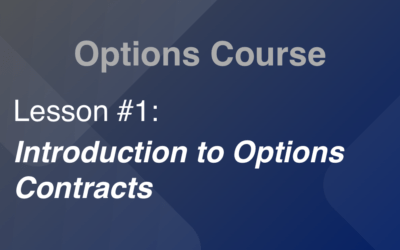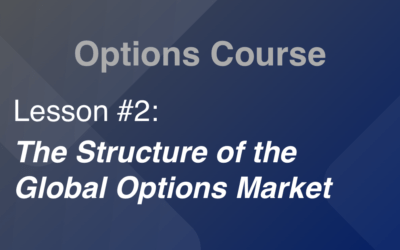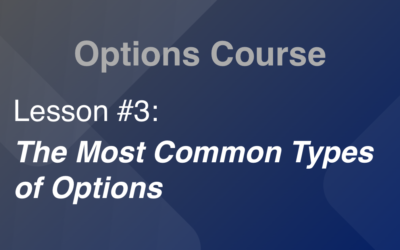What Are the Greeks?
“Option greeks” is a term used in the options market to describe the different dimensions of risk involved in taking an options position. These variables are called option Greeks because they are typically associated with Greek symbols. Each risk variable is a result of an imperfect assumption or relationship of the option with another underlying variable. Traders use different Greek values, such as delta, theta, and others, to assess options risk and manage option portfolios.
KEY TAKEAWAYS
- The ‘Greeks’ refer to the various dimensions of risk that an options position entails.
- Greeks are used by options traders and portfolio managers to hedge risk and understand how their p&l will behave as prices move.
- The most common Greeks include the Delta, Gamma, Theta, and Vega – which are first partial derivatives of the options pricing model.
The Basics of The Option Greeks
Option greeks encompass many variables. These include delta, theta, gamma, vega, and rho, among others. Each one of these option Greeks has a number associated with it, and that number tells traders something about how the option moves or the risk associated with that option. The primary Greeks (Delta, Vega, Theta, Gamma, and Rho) are calculated each as a first partial derivative of the options pricing model (for instance, the the Black-Scholes model).
The number or value associated with a Greek changes over time. Therefore, sophisticated options traders may calculate these values daily to assess any changes which may affect their positions or outlook, or to check if their portfolio needs to be rebalanced. Below are several of the main Greeks traders look at.
Delta
Delta (Δ) represents the rate of change between the option’s price and a $1 change in the underlying asset’s price. In other words, the price sensitivity of the option relative to the underlying. Delta of a call option has a range between zero and one, while the delta of a put option has a range between zero and negative one. For example, assume an investor is long a call option with a delta of 0.50. Therefore, if the underlying stock increases by $1, the option’s price would theoretically increase by 50 cents.
For options traders, delta also represents the hedge ratio for creating a delta-neutral position. For example if you purchase a standard American call option with a 0.40 delta, you will need to sell 40 shares of stock to be fully hedged. Net delta for a portfolio of options can also be used to obtain the portfolio’s hedge ratio.
A less common usage of an option’s delta is it’s current probability that it will expire in-the-money. For instance, a 0.40 delta call option today has an implied 40% probability of finishing in-the-money.
Theta
Theta (Θ) represents the rate of change between the option price and time, or time sensitivity – sometimes known as an option’s time decay. Theta indicates the amount an option’s price would decrease as the time to expiration decreases, all else equal. For example, assume an investor is long an option with a theta of -0.50. The option’s price would decrease by 50 cents every day that passes, all else being equal.
Theta increases when options are at-the-money, and decreases when options are in- and out-of-the money. Options closer to expiration also have accelerating time decay. Long calls and long puts will usually have negative Theta; short calls and short puts will have positive Theta. By comparison, an instrument whose value is not eroded by time, such as a stock, would have zero Theta.
Gamma
Gamma (Γ) represents the rate of change between an option’s delta and the underlying asset’s price. This is called second-order (second-derivative) price sensitivity. Gamma indicates the amount the delta would change given a $1 move in the underlying security. For example, assume an investor is long one call option on hypothetical stock XYZ. The call option has a delta of 0.50 and a gamma of 0.10. Therefore, if stock XYZ increases or decreases by $1, the call option’s delta would increase or decrease by 0.10.
Gamma is used to determine how stable an option’s delta is: higher gamma values indicate that delta could change dramatically in response to even small movements in the underlying’s price. Gamma is higher for options that are at-the-money and lower for options that are in- and out-of-the-money, and accelerates in magnitude as expiration approaches. Gamma values are generally smaller the further away from the date of expiration; options with longer expirations are less sensitive to delta changes. As expiration approaches, gamma values are typically larger, as price changes have more impact on gamma.
Options traders may opt to not only hedge delta but also gamma in order to be delta-gamma neutral, meaning that as the underlying price moves, the delta will remain close to zero.
Vega
Vega (v) represents the rate of change between an option’s value and the underlying asset’s implied volatility. This is the option’s sensitivity to volatility. Vega indicates the amount an option’s price changes given a 1% point change in implied volatility. For example, an option with a Vega of 0.10 indicates the option’s value is expected to change by 10 cents if the implied volatility changes by 1% point.
Because increased volatility implies that the underlying instrument is more likely to experience extreme values, a rise in volatility will correspondingly increase the value of an option. Conversely, a decrease in volatility will negatively affect the value of the option. Vega is at its maximum for at-the-money options that have longer times until expiration.
Rho
Rho (p) represents the rate of change between an option’s value and a 1% point change in the interest rate. This measures sensitivity to the interest rate. For example, assume a call option has a rho of 0.05 and a price of $1.25. If interest rates rise by 1% point, the value of the call option would increase to $1.30, all else being equal. The opposite is true for put options. Rho is greatest for at-the-money options with long times until expiration.
How does Sensa Investments Use the Greeks?
The greeks are an integral part of the Sensa Investments’ algorithms and risk management mechanisms (read more about our approach here). Principally the algorithms target a certain level of a delta on entry and exit which depends on prevailing market conditions and relative market valuation levels.
The main goal of the Sensa Investments’ option based investment products is earning option premium over time through positive theta positioning while avoiding excessive losses from unfavourable changes in vega and gamma. As opposed to hedging vega and gamma risk through additional long positions we believe that effective risk management through repositioning of delta in periods of financial stress provide a better risk reward profile than constant repositioning of vega and gamma risk.
Further Reading
We highly recommend Options, Futures, and Other Derivatives by John C. Hull.






Vega (v) represents the rate of change between an option’s value and the underlying asset’s implied volatility. This is the option’s sensitivity to volatility. Vega indicates the amount an option’s price changes given a 1% change in implied volatility. For example, an option with a Vega of 0.10 indicates the option’s value is expected to change by 10 cents if the implied volatility changes by 1%.
???? 1% OR 1%POINT ????
Should be 1% point. Have made change to article to make this more clear. Thanks a lot Wilfried for pointing this out.